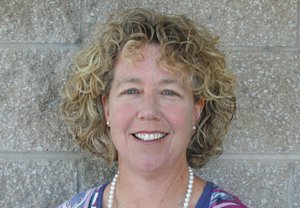GILROY
– When Jesus Florencio Gonzalez moved to Silicon Valley from
Mexico eight years ago, he expected to expand his computer
component sales business – as well as his grasp of English – and
return to his homeland one year later.
GILROY – When Jesus Florencio Gonzalez moved to Silicon Valley from Mexico eight years ago, he expected to expand his computer component sales business – as well as his grasp of English – and return to his homeland one year later.
Now, the self-employed 48-year-old not only wants to spend, at the very least, another four years in Gilroy, he wants to spend it on the Gilroy Unified School District Board of Trustees. Gonzalez became involved with, and concerned about, the district when it began to make substantial changes to the bilingual program here.
“I want to help the kids,” said Gonzalez, referring to all of Gilroy’s public school children in general and immigrant children in particular.
“Sometimes the parents (of immigrant children) don’t want to learn English because they think they want to go back to Mexico. The problem with the Mexican kids is that they don’t know where they come from.
“They are American people. They are Latin-American people. They have this conflict,” Gonzalez observed .
Of Gilroy’s 9,530 public school students, 6,240 (66 percent) are Hispanic.
Curriculum
One way Gonzalez plans to help immigrant students is to make sure Spanish-speaking students who come to Gilroy have a fair shake in public schools. He argues that in many other countries, students are becoming fluent in more than one language.
“I don’t understand why we don’t try to do that here,” Gonzalez said.
Gonzalez points to his eldest daughter as an example of bilingual education success. In elementary school, his daughter took some classes in English and other classes in Spanish at Las Animas School. Now in the 11th grade, she is fluent in English, Spanish and is learning French. She also maintains straight As, Gonzalez said.
“I think that’s wonderful,” he said.
Gonzalez, a member of the Community Alliance for Fair and Equitable Education (CAFEE), supports the honors program at Gilroy High School, but is reserving his final judgment until the end of this year after the program gets evaluated by a special committee. He said he was pleased to learn that of the students in high school honors programs, more than half were not part of a GATE program in elementary or middle school.
Gonzalez compared such a balance to a sports team with both talented and ordinary players. He said that the good players can help the ordinary players perform at higher levels.
As far as elementary and middle school honors courses are concerned, Gonzalez wants to see more effort to enroll English Language Learners into Gifted and Talented Education (GATE) programs earlier.
Students are eligible for GATE as early as third grade, but because many English language learners are not fluent at that age, says Gonzalez, many smart children are getting passed over.
“Why should they have to wait four to five years to get into the program?” Gonzalez asked. “All the smart people should be in GATE.”
Gonzalez says standardized tests can be effective tools to discover academic strengths and weaknesses. He noted there is a lot of standardized testing, and in a few years it may be better to reduce the number of tests.
Gonzalez also expressed some skepticism toward the state’s heavy emphasis on standardized tests when schools like Gilroy’s have so many English language learners taking the test in English.
“One small word can change a whole idea,” Gonzalez said. “I don’t want to say we need to take the test in Spanish, but we need to help the kids translate their skills in Spanish to English. I don’t think this can happen in one year and the bilingual program we have now is only for kids in first and second grades.”
Facilities
Gonzalez, who rents an apartment in Gilroy, is in support of the school district’s $69 million facilities bond – Measure I – which is also on the Nov. 5 ballot. He said district schools are old and in need of repair. He cited El Roble and Las Animas elementary schools as two campuses that are in particular need of the bond.
Among a number of other upgrades, El Roble would have its existing buildings reconfigured to create individual classrooms. Currently, students share large rooms. For Las Animas, the district want to acquire land to rebuild the school on a new site.
Finances
Gonzalez was not intimately familiar with the district’s budget or its facilities plan, but had a general sense that finances would be tight in the short term.
Gonzalez figures the state’s tight budget will likely impact education funding over the next few years. Nonetheless, he would like to see all district classes move toward a 20-to-1 student-to-teacher ratio.
He said smaller class size makes it easier to keep discipline and improves communication between teacher and student and teacher and parent. Gonzalez also wants to see more counselors per pupil, too.
Communication
Gonzalez said that many English language learner parents in Gilroy are not aware of important district matters, such as GATE enrollment and the end of the magnet school programs.
Magnet school programs were stopped when the district moved toward a neighborhood schools enrollment policy. It was done, in part, to make it easier for parents to be involved with their child’s school.
Gonzalez said the district needs to show that participation has increased in order to justify the neighborhood schools policy.
He said the district’s goals, of which improved communication is one, are good goals. If elected, he said he would help meet all of those goals for the benefit of every student in the Gilroy Unified School District.













